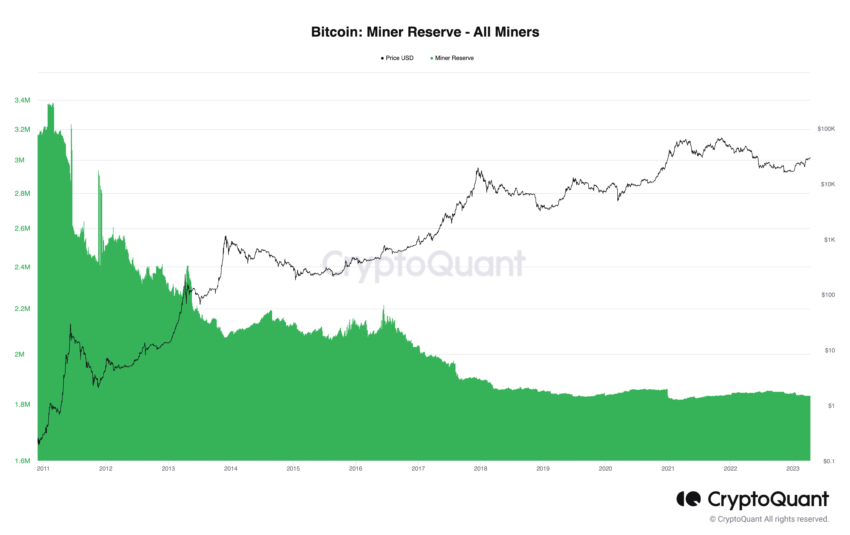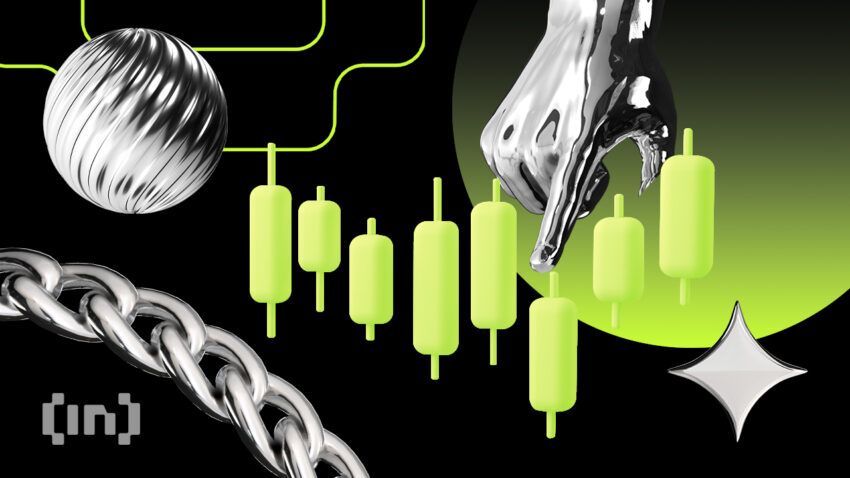As the 2024 Bitcoin halving draws closer, investors wonder what could be the potential impact on the price of BTC.
Valuable clues about Bitcoin’s future price trajectory can be obtained by examining the fees-to-rewards ratio and historical accumulation and distribution cycles.
BTC’s Fees-to-Rewards Ratio
The fees-to-rewards ratio is a crucial indicator that sheds light on the proportion of transaction fees relative to miners’ total miner rewards. This stands for the block rewards and transaction fees combined.
The ratio provides insights into the financial sustainability of the Bitcoin network. It shows the extent to which transaction fees contribute to miners’ revenue. As block rewards decrease over time due to Bitcoin’s halving events, transaction fees become a more critical source of income for miners.

A higher fee-to-rewards ratio indicates that transaction fees make up a larger percentage of miners’ revenue. This is essential for maintaining the security and stability of the network when block rewards diminish.
On the other hand, a lower ratio suggests miners rely more heavily on block rewards for revenue.
Relationship Between Fees and Price
The fees-to-rewards ratio might have an indirect relationship with Bitcoin’s price.
A higher percentage indicates a healthy and sustainable Bitcoin network, which could increase investor confidence and demand for BTC, ultimately driving its price higher.
Conversely, a lower fee-to-rewards ratio might signal a greater reliance on block rewards for miners’ income. As block rewards decrease over time due to halving events, a lower ratio could raise concerns about the network’s long-term sustainability.
Suppose miners’ income becomes insufficient to cover their operational costs. In that case, they may be forced to sell their BTC holdings to stay afloat. Consequently, increasing selling pressure in the market and potentially contributing to a drop in the price of Bitcoin.

However, it is essential to note that the fees-to-rewards ratio is just one factor influencing Bitcoin’s price. Other factors, such as market sentiment, macroeconomic conditions, and regulatory developments, can also play significant roles in determining the price of BTC.
Bitcoin Price Prediction by the 2024 Halving
Bitcoin’s early 2023 performance, with an 84% year-to-date increase and a weakened correlation with the Nasdaq 100, has set the stage for an intriguing on-chain analysis leading up to the 2024 halving event.

Historical accumulation and distribution cycles and the fees-to-rewards ratio can help project the future trajectory of Bitcoin’s price.
Institutional investors have historically favored accumulation cycles, while distribution cycles have been driven by retail demand. These cycles often align with Bitcoin’s halving events, with accumulation cycles typically preceding halvings.
The fees-to-rewards ratio can be a useful predictor of the shift between these cycles, as it tends to spike before each distribution cycle.
As the fees-to-rewards ratio has started to spike again, it may suggest that the market has entered another accumulation cycle. This is reminiscent of the accumulation cycles in 2019 and 2020, when the ratio spiked before significant price rallies.

Based on the 2019 model, the current price trajectory suggests that Bitcoin could reach $46,092 by the summer of 2023.
However, the true target lies in the upcoming halving event, scheduled for April 6, 2024, which will further increase Bitcoin’s scarcity by reducing the block reward from 6.25 to 3.125.
After reaching the target price of $46,092, it is conceivable that Bitcoin could attain a $100,000 valuation in the aftermath of the 2024 halving event, as the reduced block reward increases BTC’s scarcity and potentially drives up demand.
In adherence to the Trust Project guidelines, BeInCrypto is committed to unbiased, transparent reporting. This news article aims to provide accurate, timely information. However, readers are advised to verify facts independently and consult with a professional before making any decisions based on this content.
This article was initially compiled by an advanced AI, engineered to extract, analyze, and organize information from a broad array of sources. It operates devoid of personal beliefs, emotions, or biases, providing data-centric content. To ensure its relevance, accuracy, and adherence to BeInCrypto’s editorial standards, a human editor meticulously reviewed, edited, and approved the article for publication.

